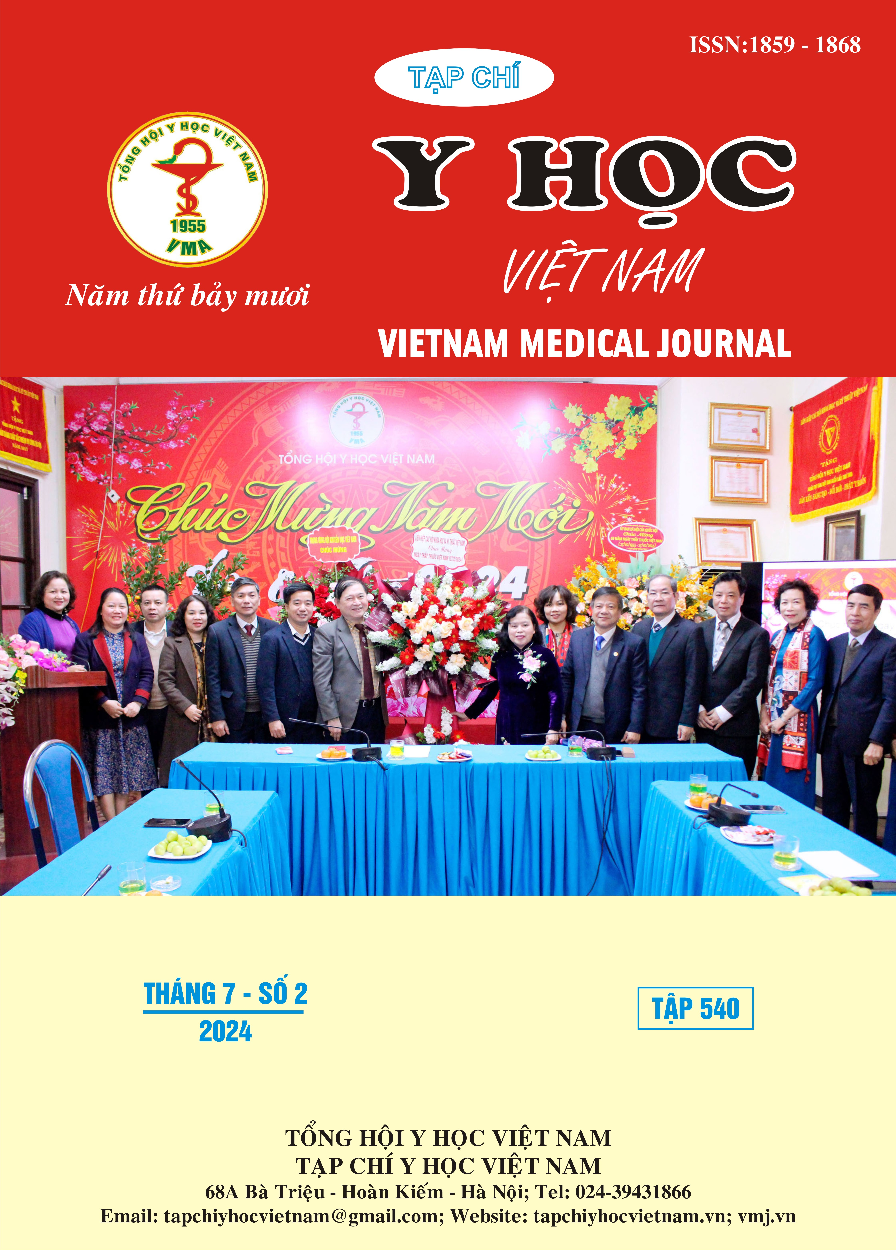EVALUATION OF THE RESULTS OF ENDOSCOPIC INTERVENTION IN PATIENTS WITH CRITICAL LIMB ISCHEMIA
Main Article Content
Abstract
Objective: Evaluate the results of endovascular intervention in patients with critical limb ischemia. Subjects and methods: Clinical intervention study. Evaluate treatment results after 1, 3, 6, and 12 months in 119 patients undergoing endovascular intervention with critical limb ischemia at 108 Military Central Hospital and Hanoi Heart Hospital from January 2018 – March 2023. Results: The overall rate of complications was 4.2%. Technical success was 88.8%; clinical success was 89.5%; hemodynamically success was 78.3%. After 12 months of intervention, most evaluated patients had Rutherford stages, mainly from 1-3. The ulcer healing/necrosis rate after 1 month was 3.1%; after 12 months, it was 74.6%. The average ulcer healing time was 4.9 ± 2.7 months. After 12 months of intervention, 42/119 patients had restenosis after intervention (35.3%), 46/119 patients had restenosis after intervention (38.7%), there were 26/119 patients with indications for re-intervention after intervention (21.8%). Conclusion: Endovascular interventional treatment in patients with critical limb ischemia has good technical, clinical, and hemodynamic results and a relatively high wound healing rate.
Article Details
Keywords
critical limb ischemia, treatment results, endovascular intervention.
References
2. Nút Lâm Văn, Tường Nguyễn Hữu (2023). Đánh giá kết quả can thiệp nội mạch điều trị hẹp động mạch chậu đùi mạn tính có thiếu máu chi trầm trọng. Tạp chí Y học Việt Nam, 525(1B).
3. Giles K. A., Pomposelli F. B., Spence T. L., et al. (2008). Infrapopliteal angioplasty for critical limb ischemia: relation of TransAtlantic InterSociety Consensus class to outcome in 176 limbs. J Vasc Surg, 48(1): 128-36.
4. Alexandrescu V., Hubermont G., Philips Y., et al. (2009). Combined primary subintimal and endoluminal angioplasty for ischaemic inferior-limb ulcers in diabetic patients: 5-year practice in a multidisciplinary 'diabetic-foot' service. Eur J Vasc Endovasc Surg, 37(4): 448-56.
5. Galaria, II, Davies M. G. (2005). Percutaneous transluminal revascularization for iliac occlusive disease: long-term outcomes in TransAtlantic Inter-Society Consensus A and B lesions. Ann Vasc Surg, 19(3): 352-60.
6. Lương Tuấn Anh (2019), Nghiên cứu đặc điểm lâm sàng, cận lâm sàng và hiệu quả điều trị can thiệp nội mạch bệnh động mạch chi dưới mạn tính khu vực dưới gối, Luận án tiến sỹ y học, Viện nghiên cứu khoa học y dược lâm sàng 108.
7. Kobayashi N., Hirano K., Nakano M., et al. (2015). Predictors of non-healing in patients with critical limb ischemia and tissue loss following successful endovascular therapy. Catheter Cardiovasc Interv, 85(5): 850-8.
8. Kawarada O., Yasuda S., Nishimura K., et al. (2014). Effect of single tibial artery revascularization on microcirculation in the setting of critical limb ischemia. Circ Cardiovasc Interv, 7(5): 684-91.


